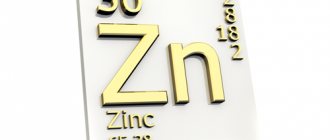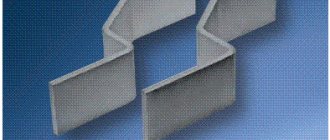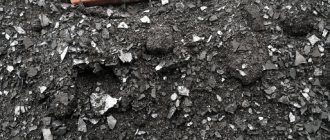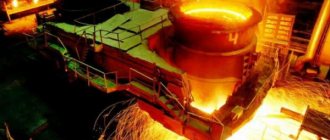Silver solder is constantly used for industrial production and at home, because it is of the highest quality.
However, its cost is quite high, because it contains precious material. This is why people often try to make this solder themselves. However, this can only be done by those who have specialized knowledge in this area, because it is necessary to make a material that will have all the necessary characteristics and properties. Silver in its pure form is a rather expensive metal, so it is used for solder in rare cases; it is mainly needed for jewelry production. The material has a soft structure, so to ensure a high-quality connection, it is necessary to add other materials to the alloy, for example, aluminum, cadmium, zinc, nickel or copper. When pure silver is combined with copper and zinc, the melting of the metal will become significantly higher, which has a good effect on soldering parts. The seams are of high quality and durable. If there is about 10% or more silver in the material, then the seams become very plastic and are perfectly processed. This option is excellent for soldering steel materials.
With a pure silver content of about 25%, the material efficiently solders brass workpieces. The resulting surface is neat and looks attractive.
Very often, solders are produced in the form of continuous sheets. Before work, it must be carefully divided into strips of about 2 mm in size, but the width can be made at your own discretion, it depends on how the material will be used. Gap soldering in this way produces the highest quality. After use, the seams tolerate various vibrations well and do not deteriorate. Parts may even be deformed or subjected to physical stress, but the connection remains intact and sealed for maximum time.
Chemical composition of the alloy for joining materials
Pure silver is a soft metal and is therefore not suitable for work.
Mostly, craftsmen use mixtures that contain zinc, nickel, aluminum, copper, and cadmium. In addition to silver, silver solders also contain zinc and copper. A seam made with this composition is strong and durable. Compounds of silver, copper, zinc have a high melting ability. They are used for silver solder. To control its percentage composition, GOST 19746 74 was developed. Solders, silver grades, are always indicated in the instructions for the products. The soldering seam obtained in this way is durable.
Modern soldering processes involve the use of silver solder, which, when connecting nodes, is suitable for step soldering. Such work requires the use of an alloy that can withstand temperatures of 600°C.
The solder contains ingredients such as 30% silver, 20% copper, 16% zinc, 33% cadmium. The alloy is very brittle and is intended for soldering materials that are not subject to vibration. The composition with the amount of silver increased to 52% is very fluid, but withstands loads well during multi-stage stages of soldering materials.
Silver solder has high strength, is resistant to corrosion in aggressive environments, has a low melting point, and high thermal conductivity. During operation, it completely fills the gap between the parts being soldered and fits well on the metal surface.
When working, you need to make sure that the solder completely fills the gap between the parts.
An alloy of 28.5% copper of the PSr-72 grade has high ductility. When working on creating solder with your own hands, you should remember that its melting point with copper decreases when alloyed with lithium. The resulting alloy is used for soldering steel materials that are resistant to corrosion. To reduce the melting temperature of the solder, tin is added to it in an amount of 35 to 70%. The resulting alloy allows you to solder various materials, avoiding the formation of cracks.
Where can I get tin?
I need a certain amount of tin - I wanted to cast it here in my spare time. anything.
I just can’t even imagine where they get it.
- pro
- Group: Users
- Posts: 7,654
at non-ferrous metal collection points! outbid, or wait for those who bring))
P.S. steelworker?? are you doing HARD? )) P.P.S. fuck with me?))))
- V-Twin Drag Machine
- Group: Users
- Messages: 2,990
- male chauvinist pig
- Group: Users
- Posts: 8,156
- coffee for me!
- Group: Users
- Posts: 2,283
Chemical composition of the alloy for joining materials
The process technology is based on the use of silver solder intended for step soldering. Considering that the solder must withstand temperatures up to 600 °C, its components are: 33% cadmium, 30% silver, 16% zinc, 20% copper. The composition is quite fragile and cannot withstand vibrations. By increasing the amount of silver to 52%, a fluid mixture is obtained that can withstand multi-stage soldering.
The creation of homemade solder is mainly for the private sector. Do-it-yourself silver solder is often made in order to carry out step soldering, when it is necessary to solder several layers of metal, since it is necessary to obtain a layer of great thickness, which cannot be created at one time.
To create such a material, you need to take 30% silver. Additional elements will be cadmium, which should be 33%, zinc - 16%, and copper - 20%. It is advisable not to use this alloy in places that are subject to strong vibrations and shocks, as it is brittle and can be destroyed under mechanical stress.
Silver solder
What happened?
The main task was:
A. it just had to work;
b. it was necessary to identify all the pitfalls of the artisanal soldering technology.
Actually, there is no particular point in driving a 35-watt processor in various tests (on my motherboard its multiplier is blocked), although even in the simplest tests that I conducted for myself before and after, I did not notice any particular difference, literally a degree or two , although all this could have been the result of a coincidence.
I note that if my sample previously worked smoothly with RAM at a frequency of 3533 MHz, then after this procedure it lost the ability to operate stable while maintaining previously existing parameters, and I had to roll back to 3466 MHz. This is also a reason to be wary and rethink everything thoroughly.
An ancient recipe for cooking silver solder
Let's try to figure out how to make silver solder at home. There are several options for its manufacture, each with its own nuances. To obtain the alloy, you will need a coin (fifty kopecks) from 1924, as well as five kopecks from 1962. For work you need: ingus, silver, gas burner, spoon.
Making silver solder begins with melting the precious metal. Then a five-kopeck coin is added. To ensure complete mixing, roll the mixture onto a spoon. The final result of mixing depends on the duration of this process. The disadvantage of this technology is the burnout of the chemical components needed for solder.
It is most convenient to heat solder on a gas burner.
- silver;
- spoon (not tablespoon);
- ingus;
- gas-burner.
At the beginning of the work, silver is melted in a spoon. Add a five-kopeck coin to the resulting melt and roll the mixture over a spoon for better mixing. The longer the spoon is rolled, the better the mixing process occurs. But there is one significant drawback: many components necessary for solder burn out.
Then the master who makes the alloy with his own hands pours it into ingus and rolls it out without annealing. The resulting solder is of high quality: 10 g refers to the 900th sample.
When soldering, it is very important to prepare fresh flux, which will ensure high-quality work. It is necessary to carefully monitor the size of the flame in the burner: a soft, not very hot fire in the form of a broom will ensure a high-quality seam.
For work, hard solders are used, which contain: 80 Ag, 16 Cu, 4 Zn, 75 Ag, 22 Cu, 3 Zn. Soft solders include: 65 Ag, 20 Cu, 15 Zn.
To obtain light silver solder used in repairing products, you need to prepare: 7 parts silver, 2.8 parts brass, 0.35 parts zinc. It is important to clean the brass from the oxide film before starting work. To obtain 10 g of solder, 999 silver is melted. After obtaining the liquid composition, add brass and mix the contents in a spoon.
- sandpaper;
- spoon;
- gas burner;
- mixing spatula;
- folds;
- scissors;
- scales.
Pure silver is not used for solder, as it is too expensive a metal.
- silver;
- brass;
- pure zinc;
- borax, which is added to the molten composition.
Sometimes pure zinc is not added: it is better to use its alloy with brass or copper. Zinc is added to the solder, wrapped in silver foil.
Surface preparation
Before you begin tinning, you must complete the following steps:
It should be taken into account that it will not be possible to completely remove the oxide film, since a new formation will immediately appear in the cleaned area. Therefore, stripping is carried out not with the goal of completely removing the film, but to reduce its thickness in order to simplify the task of the flux.
Heating the soldering area
To solder small parts, you can use a soldering iron with a power of at least 100W. Massive items will require a more powerful heating tool.
Soldering iron 300 Watt
The best option for heating is to use a gas burner or blowtorch.
Simple gas burner
When using a burner as a heating tool, the following nuances should be taken into account:
Engineering works
For technical work, silver solders are used containing up to 80 parts of silver, 16 parts of copper, 4 parts of zinc. Of interest are jewelry silver solders, the composition of which is: 2.8 parts brass, 7 parts silver, 0.2 parts zinc. Before starting work, the brass is cleaned of the oxide film. To obtain 10 grams of such solder, 999 silver is melted.
Brass is added to the liquid metal and mixed in a spoon. After complete melting, the mixture is combined with zinc, and the resulting composition is rolled. Next, the rolled sheet is cut with scissors and weighed on a scale. For effective work you need: a spoon, sandpaper, a gas burner, scales, folds, a stirring spoon.
- Before you start soldering silver, you should prepare the product made from it for work, namely, clean it of contaminants (a degreaser is suitable for this purpose). A thin layer of flux is applied to the treated surface of the product with a brush.
- The parts that need soldering are then placed on the brick. To securely fix the elements, you need to use clamps and nichrome wire.
- A piece of solder is placed on the part that needs soldering. How to take a fragment: you need to take a strip and use wire cutters to cut off a piece measuring 2 by 2 millimeters.
- Take a gas burner and place it on the side of the decoration. The area being treated is heated evenly, but as soon as the flux melts, the flame should be intensified and continued to work until a seam is formed.
- After soldering, the product should be cleaned of flux and excess solder. Sandpaper is suitable for this purpose.
- Then the decoration should be dipped into a container of water, and then into an etching solution. If the solution gets on your skin, wash it off immediately with water.
During work, care should be taken to comply with personal safety regulations. First of all, it is necessary to ensure access to air in the work area - just open the window. You should work in a denim apron (denim is highly flammable) and safety glasses.
A few words about fluxes
The purpose of fluxes is to protect the soldering metal from the effects of oxides by isolating the soldering area from air. The most common composition of fluxes for repairs is a mixture of potash and borax in equal proportions; sometimes soda is used instead of potash.
To obtain powdered borax, you must first dry the aqueous solution of borax. It is better to do this on a regular gas stove in a porcelain evaporation container.
Once the solution turns into crystals, they need to be ground to a powder. Flux must be removed after soldering with a weak heated acid solution.
Melting solder
By melting the metals that are part of the mixture, silver solder for steel is obtained in a crucible. Place the gel in the forge, having prepared special equipment: borax, a container with water, a coal mixture, an iron hook, a crucible. First you need to melt the refractory metals, and then low-melting metals are added to the mixture.
To make high-quality solder with your own hands, the work must be divided into two stages. First, the crucible is removed from the furnace and the metal is combined in a container filled with water. As a result, fine-grained drops of solder appear. They are dried, then melted again, covered with borax. Once the metal is completely melted, it is poured into special molds. After hardening, the bars or tiles are rolled into thin strips. For subsequent use, they are cut on a lathe into thin wire.
By melting the metals that make up the alloy in a crucible, silver solder is obtained. The crucible is placed in a furnace or the components are melted using a blowpipe. Before work you need to prepare the equipment:
- crucible;
- wooden stick or iron hook;
- borax;
- charcoal mixture;
- container with water.
Solder components are melted using borax. The order of the operation is observed: refractory metals are melted first, then low-melting metals are added.
The solder components are melted using borax.
To make solder with your own hands, liquid metals are constantly stirred in a crucible with a wooden rod or an iron hook. To create higher quality solder, the entire process is divided into two stages. The crucible is pulled out of the furnace, and the metal is combined in a container with water. Fine-grained drops are formed, which are dried and melted a second time, covered with borax on top.
After complete melting, the metal is poured into molds. The frozen tiles or bars are rolled into strips, which are crushed on a lathe.
For technical soldering of silver objects, alloys consisting of metals are suitable: 20% copper 80% silver, 4% tin 48% brass. When soldering steel with silver solder, the phase diagram between copper and silver is taken into account.
Varieties
Silver solders are divided into several varieties depending on their silver content.
Solders with a low content - up to 40% - are used for soldering workpieces made of steel and non-ferrous alloys. Such compositions have insufficient strength to connect parts thicker than 3 mm.
Compositions with an average content of 40 to 60% are used for soldering copper, nickel and steel parts that experience significant static loads, shock and vibration.
Silver solder with a high percentage - from 65% is used when soldering especially critical seams, such as band saws and wire connections. The high silver content allows for excellent electrical conductivity.
Features of silver soldering
Soldering with silver solder at home also involves the reverse process - the transformation of liquid metal into a solid state. First, it is important to completely melt the silver, then it is cast into the ingus. All work is divided into three stages: making a spoon - a melting pot, adding flux, placing the charge in the spoon, melting the starting material, placing it in the ingus.
Place a small cardboard rectangle at the bottom of the spoon, then a slightly larger plate so that it wraps around the edges of the spoon. Then the cardboard sheets are fried with high quality. The stock must be concave to achieve the desired result. The process of melting solder at home is lengthy, so you will have to be patient. Sorting of the charge is carried out on jewelry scales. The master will need the following materials:
- electronic jewelry scales;
- 20 g of 916 silver scrap;
- 875 silver scrap;
- pure silver (12 grams);
- borax;
- metal for solder;
- gas-burner
Advantages
The melting point of pure silver solder is 962 °C, the seam is ductile and soft. To save precious metal and produce stronger connections, other metal elements are added to the solder.
The advantages of a particular solder depend on the composition and percentage of additives.
The general advantages of silver solders are:
- high fluidity;
- strength;
- corrosion resistance;
- suitability for working with a wide range of materials;
- low resistance to electric current.
The lower the Ag content, the lower the operating temperature of the composition. The labor intensity and energy intensity of soldering are proportionally reduced.
Silverware repair
Beautiful chains, bracelets, earrings, forks, spoons, silver glass holders decorate a person’s life. But over time, products made of precious metal break down and need repair and restoration. To perform such work you will need silver solder. For 925 standard, you can make it yourself, using the advice of professional jewelers.
For the work you will need the following materials and tools: regular and irregular-shaped soldering irons, solder casting, scrap silver. The easiest way to repair a broken chain is to take it to a jeweler. But if you wish, you can cope with the problem at home, saving money.
To perform such actions, it is important to have information about the physical and chemical characteristics of the material. The melting point of silver is 960 degrees Celsius. From the jewelers' point of view, this is an average figure. For example, copper can melt at 1083ºC, gold melts at 1063ºC.
Depending on the components that make up the silver, their temperature will vary. In order to accurately find out the characteristics of the alloy, you can use technical reference books. Marking of silver solders implies a sequence of Russian letters and numbers. The numbers characterize the percentage of noble metal in the solder.
To repair a silver product, you need to prepare a soldering iron and clean the surface of the product. Silver solder allows you to make strong, tight seams that are resistant to corrosion. When repairing jewelry, solder containing more than 70 percent silver or a special soldering paste is used.
Soldering tool
Almost anyone may need to solder a piece of silver jewelry, such as a silver ring with a crack or a broken chain.
Of course, you can turn to a professional jeweler, but such services can be quite expensive.
It is much more economical to do the soldering yourself. This is quite a delicate job, but with due care and minimal soldering skills, it is quite possible to complete it.
Usually in such cases they use an electric soldering iron or a gas torch. The quality of silver soldering will depend on the temperature that the working tool can provide.
It is interesting that not all electric soldering irons provide a melting temperature sufficient for soldering with silver solders.
For example, if an electric soldering iron is designed for solders with a melting point of up to +350 degrees, then it will not be suitable; a much higher temperature is needed here.
In addition, to solder jewelry made of silver of a particular standard, jewelers use special electric soldering irons with thin tips (although standard-sized tips are also suitable for one-time soldering).








